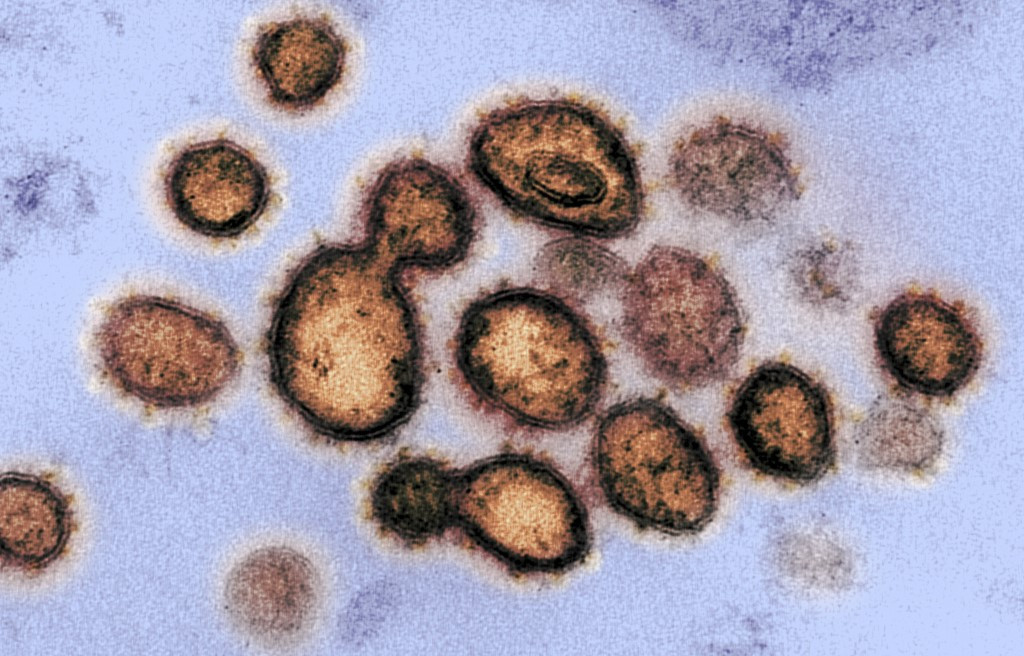Popular Reads
Top Results
Can't find what you're looking for?
View all search resultsPopular Reads
Top Results
Can't find what you're looking for?
View all search resultsWHO acknowledges 'evidence emerging' of airborne spread of COVID-19
An open letter to the Geneva-based agency, published on Monday in the Clinical Infectious Diseases journal, 239 scientists in 32 countries outlined evidence that they say shows floating virus particles can infect people who breathe them in. Because those smaller exhaled particles can linger in the air, the scientists are urging WHO to update its guidance.
Change text size
Gift Premium Articles
to Anyone
 In this file photo taken on Feb. 27, 2020 this handout illustration image courtesy of the National Institutes of Health taken with a transmission electron microscope shows SARS-CoV-2, the virus that causes COVID-19, isolated from a patient in the US, as Virus particles are shown emerging from the surface of cells cultured in the lab.The World Health Organization on Tuesday acknowledged "evidence emerging" of the airborne spread of the novel coronavirus, after a group of scientists urged the global body to update its guidance on how the respiratory disease passes between people.
( Handout/National Institutes of Health/AFP/File)
In this file photo taken on Feb. 27, 2020 this handout illustration image courtesy of the National Institutes of Health taken with a transmission electron microscope shows SARS-CoV-2, the virus that causes COVID-19, isolated from a patient in the US, as Virus particles are shown emerging from the surface of cells cultured in the lab.The World Health Organization on Tuesday acknowledged "evidence emerging" of the airborne spread of the novel coronavirus, after a group of scientists urged the global body to update its guidance on how the respiratory disease passes between people.
( Handout/National Institutes of Health/AFP/File)
T
he World Health Organization on Tuesday acknowledged "evidence emerging" of the airborne spread of the novel coronavirus, after a group of scientists urged the global body to update its guidance on how the respiratory disease passes between people.
"We have been talking about the possibility of airborne transmission and aerosol transmission as one of the modes of transmission of COVID-19," Maria Van Kerkhove, technical lead on the COVID-19 pandemic at the WHO, told a news briefing.
The WHO has previously said the virus that causes the COVID-19 respiratory disease spreads primarily through small droplets expelled from the nose and mouth of an infected person that quickly sink to the ground.
But in an open letter to the Geneva-based agency, published on Monday in the Clinical Infectious Diseases journal, 239 scientists in 32 countries outlined evidence that they say shows floating virus particles can infect people who breathe them in.
Because those smaller exhaled particles can linger in the air, the scientists are urging WHO to update its guidance.
Speaking at Tuesday's briefing in Geneva, Benedetta Allegranzi, the WHO's technical lead for infection prevention and control, said there was evidence emerging of airborne transmission of the coronavirus, but that it was not definitive.
"...The possibility of airborne transmission in public settings - especially in very specific conditions, crowded, closed, poorly ventilated settings that have been described, cannot be ruled out," she said.
"However, the evidence needs to be gathered and interpreted, and we continue to support this."
Any change in the WHO's assessment of risk of transmission could affect its current advice on keeping 1-meter of physical distancing. Governments, which rely on the agency for guidance policy, may also have to adjust public health measures aimed at curbing the spread of the virus.
Van Kerkhove said the WHO would publish a scientific brief summarizing the state of knowledge on modes of transmission of the virus in the coming days.
"A comprehensive package of interventions is required to be able to stop transmission," she said.
"This includes not only physical distancing, it includes the use of masks where appropriate in certain settings, specifically where you can't do physical distancing and especially for healthcare workers."









